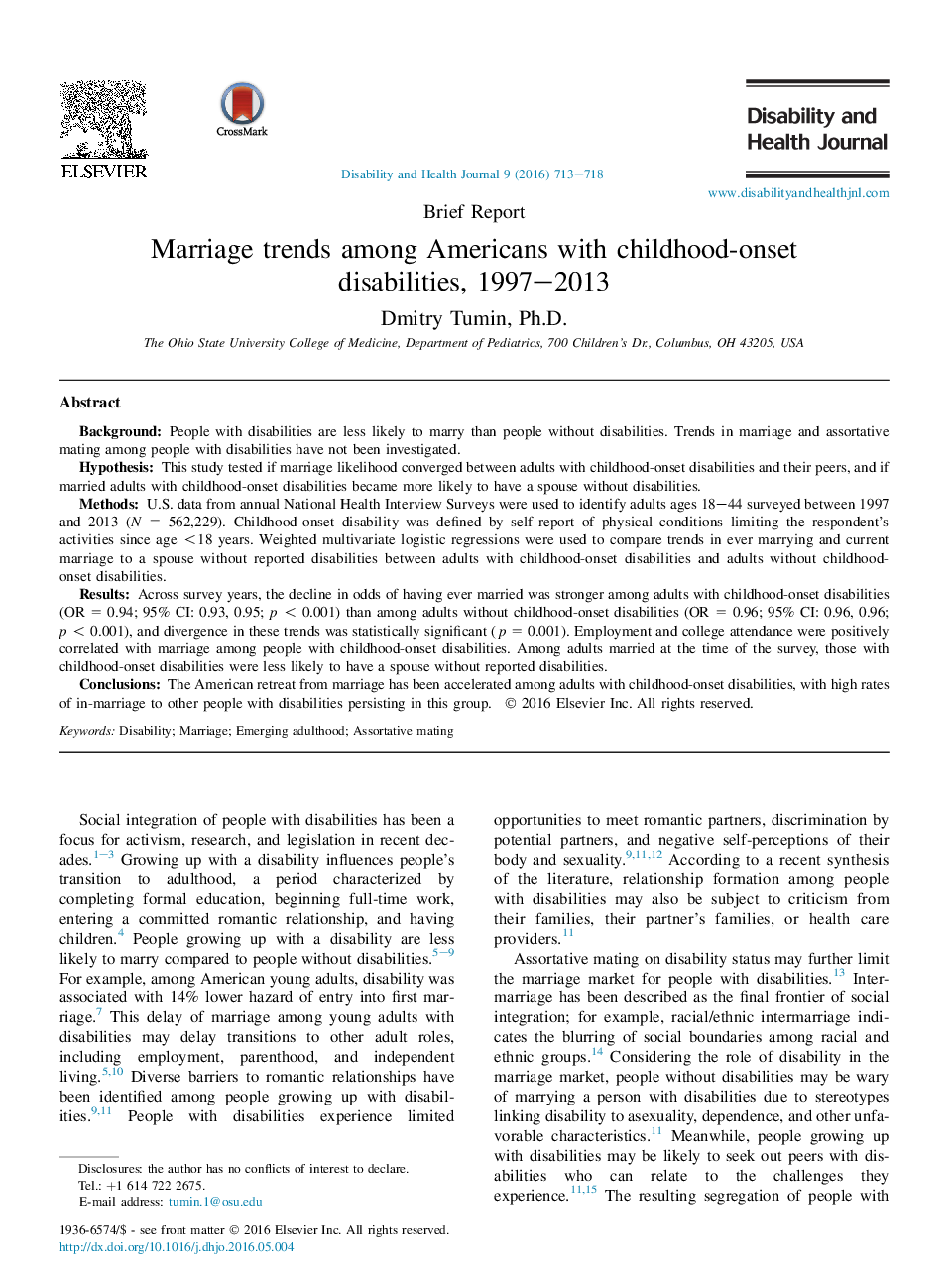| Article ID | Journal | Published Year | Pages | File Type |
|---|---|---|---|---|
| 5723239 | Disability and Health Journal | 2016 | 6 Pages |
BackgroundPeople with disabilities are less likely to marry than people without disabilities. Trends in marriage and assortative mating among people with disabilities have not been investigated.HypothesisThis study tested if marriage likelihood converged between adults with childhood-onset disabilities and their peers, and if married adults with childhood-onset disabilities became more likely to have a spouse without disabilities.MethodsU.S. data from annual National Health Interview Surveys were used to identify adults ages 18-44 surveyed between 1997 and 2013 (N = 562,229). Childhood-onset disability was defined by self-report of physical conditions limiting the respondent's activities since age <18 years. Weighted multivariate logistic regressions were used to compare trends in ever marrying and current marriage to a spouse without reported disabilities between adults with childhood-onset disabilities and adults without childhood-onset disabilities.ResultsAcross survey years, the decline in odds of having ever married was stronger among adults with childhood-onset disabilities (OR = 0.94; 95% CI: 0.93, 0.95; p < 0.001) than among adults without childhood-onset disabilities (OR = 0.96; 95% CI: 0.96, 0.96; p < 0.001), and divergence in these trends was statistically significant (p = 0.001). Employment and college attendance were positively correlated with marriage among people with childhood-onset disabilities. Among adults married at the time of the survey, those with childhood-onset disabilities were less likely to have a spouse without reported disabilities.ConclusionsThe American retreat from marriage has been accelerated among adults with childhood-onset disabilities, with high rates of in-marriage to other people with disabilities persisting in this group.
